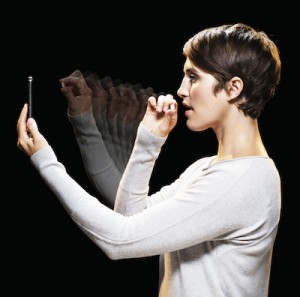 New York City-based AiCure is launching a clinical trial to validate its smartphone camera-based approach to medication adherence. The company will work with the Cincinnati Addiction Research Center (CinARC) at the University of Cincinnati on a 12-month, 130-patient trial. (Correction: The original version of this article described the system as "video-based", but the company says that is incorrect -- even though it uses the smartphone's camera, it does not use video.)
New York City-based AiCure is launching a clinical trial to validate its smartphone camera-based approach to medication adherence. The company will work with the Cincinnati Addiction Research Center (CinARC) at the University of Cincinnati on a 12-month, 130-patient trial. (Correction: The original version of this article described the system as "video-based", but the company says that is incorrect -- even though it uses the smartphone's camera, it does not use video.)
AiCure is a novel medication adherence company in terms of its approach: the company uses a tablet or smartphone's camera to observe the patient taking medications. An artificial intelligence system analyzes the data from the camera to make sure the patient took the medication correctly and sends an alert if they didn't.
"If this is deployed in a health system, you can actually monitor the performance and medication adherence rates of someone suffering from mental illness, and you can see whether they’re adherent or not," CEO Adam Hanina told MobiHealthNews in an interview last year. "And in the event that they’re not adherent there will be an escalation protocol, a reminder on their device. And then after a day or two that can get escalated to actually get a phone call from the outreach team."
The technology is particularly well-suited for work with patients taking opiates, Hanina told MobiHealthNews in an email, because it's a use case that requires highly accurate monitoring.
"Unlike many other technologies that rely on approximate measures of adherence, such as pill counts, self-reported text messages, electronic patient diaries, electronic pill bottles, and so forth, AiCure uses facial recognition and motion-sensing technology to confirm a patient has correctly taken their medication -- thereby the actual activity of taking the medication is the check mark," he wrote. "For a patient population where adherence to treatment is critical, where the cost of nonadherence is particularly high (both in terms of health outcomes and actual cost), and where an exact measure of adherence is required, i.e. every dose is accounted for, AiCure is ideally suited as a treatment monitoring solution."
The trial is supported by a $1 million grant from the National Institute on Drug Abuse (NIDA). It will "assess whether patients using the AiCure platform are more adherent and whether adoption of the system can improve treatment duration and reduce the risk of relapse," according to a statement from AiCure, and is expected to have results available by August 2015. There will be two arms to the study, one using AiCure's AiView technology, including interventions for nonadherent patients, and the other using normal treatments.
"One of the big challenges in opioid substitution therapy is medication adherence and poor retention," Hanina wrote. "Often, retention is as poor as 50 percent and because patients are not followed in real-time, by the time they’ve missed several clinic appointments, the opportunity to get them back on board has been lost. We expect the use of the AiCure platform to monitor and intervene in real-time will significantly increase both adherence and patient retention."
Hanina told MobiHealthNews last year that AiCure can detect when a patient is trying to fool the system by not taking the pill, which is what originally interested NIDA.
"[The system] allows you to increase the level of surveillance for high-risk patient populations," he said at the time. "In fact we just were awarded a $1 million grant from the National Institute on Drug Abuse to monitor high-risk patient populations taking opiate therapy, which is a methodone alternative, precisely to implement high levels of monitoring -- to identify patients deliberately trying to leave the field of view, for example, or audio spikes in the event they take the pill out of the field of view."
According to AiCure, fatal overdoses from prescription opiates are four times as prevalent as they were 15 years ago, and the overall cost of opioid abuse to the healthcare system is estimated to exceed $55 billion annually.
















